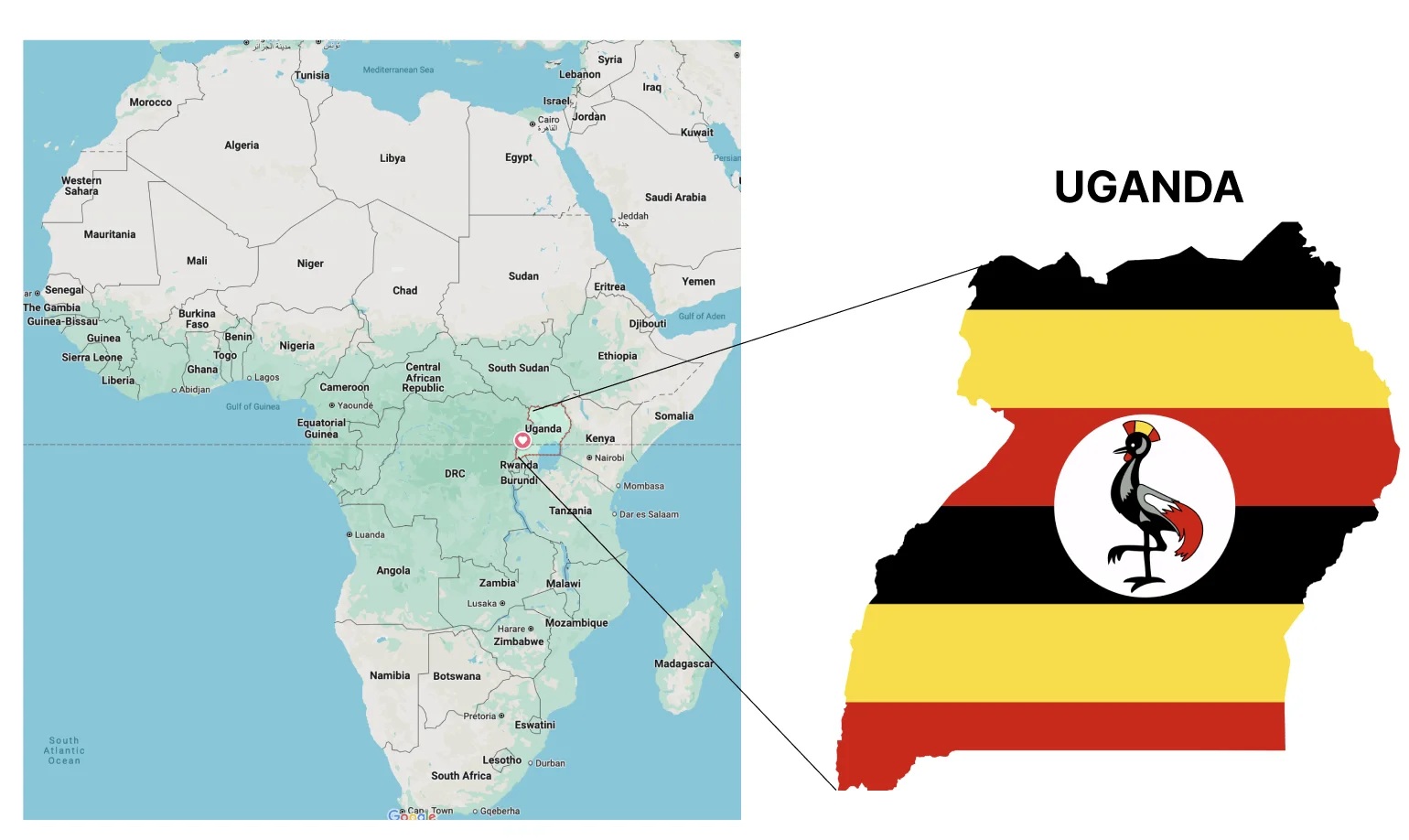Geography
Uganda is situated in East Africa, spanning from 1° South to 4° North latitude, and between 30° and 35° East longitude. The country boasts a varied landscape, featuring volcanic hills, mountains, and numerous lakes. Positioned at an average altitude of 900 meters above sea level, Uganda’s eastern and western borders are marked by mountainous regions.

Uganda is bordered to the east by Kenya, to the north by South Sudan, to the west by the Democratic Republic of the Congo, to the south-west by Rwanda, and to the south by Tanzania.

